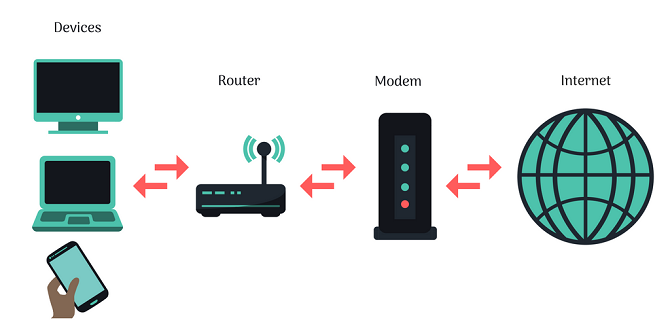The fiber optic modem (or FOM), connects an electronic device such as a computer to a network or the Internet, provides electrical to optical conversion of electronic communication and data signals for transmission using tactical fiber optic cable assemblies.
How Does Fiber Optic Modem Work?
Fiber optic modems receive incoming optical signals over fiber optic cables and convert them back to their original electronic form for full duplex transmission. Together with the tactical fiber optic cables, the FOM provides a rugged, secure, and easy deployable optical link.

What is the maximum distance that a fiber optic modem can go?
The maximum distance a modem can go is the difference between receiver sensitivity and transmit power of the fiber optic modem, divided by the transmission loss of the fiber used. For example, a basic single-mode OSD815 digital video system’s transmitter power is greater than -10dBm and its receiver sensitivity is better than -29dBm so the difference of 19dB at 1310nm allows operation over at least 45km. Note this would be very poor design because there is no allowance for a link margin.
What Is Fiber Optic Modem Used For?
Fiber optic modems are often used in data communication systems to bridge long distances at high data rates. Fiber optic systems are particularly immune to electromagnetic interference and therefore very suitable for harsh industrial environments. They can transmit data at up to 12 Mbit/s over distances up to 80 km depending on the fiber type. They range from simple devices with just a few ports to multiplexers capable of handling large-scale communication networks. For example, fiber optic cables are used by some networks for the server to building connection, while cat 7 cable is used for the wiring within the building. To convert these two types of cables you need a fiber optic modem.
What Are The Available Types Of Fiber Optic Modems?
Fiber optic modems are ideal when working with large amounts of data. Fiber optics allows data to be transferred quickly and efficiently. Available in single mode or multimode models, it’s important to choose the best one for your needs.
E1 fiber optic modem is used for modulating a framing or non-framing E1 data signal directly into a single mode or multimode optical fiber for a transmission via a fiber optic cable line. At another end of the optic cable, the optical signal is demodulated into a framing or non-framing E1 data signal. E1 interface may be directly connected with the E1 interfaces of image and data terminals or the WAN ports of MUX, switch, and router for a dedicated network setup or a LAN connection.
V35 fiber optic modem converts V 35 electrical signal into optical data stream for transport over single mode or multi-mode fiber optic cables. At the opposite end of the fiber, the optical stream is converted back into electrical signals of the appropriate interface such as G.703 & V.35. The fiber optic modem extends the transmission distance up to more than 100Km. The frame format of MOD-V.35 is frame / unframed for E1, so it can be used to transmit E1 signal of frame video or unframed video.
RS232 converter, RS485 converter and RS422 converter (RS means “recommended standard”) are the standards introduced by The Electronics Industry Association to ensure compatibility of the data transmission between equipment made by different manufacturers. RS232 Modem is for single ended data transmission from one transmitter to one receiver at relatively slow data rates (up to 20K bits/second) and short distances. RS232 Ethernet converter is widely used as we can see them from the common desk computer cases. An RS422 converter is a standard for longer data transmission distances and higher Baud rates compared with RS232. R485 converter standard meets the requirements for a truly multi-point communications network, and the standard specifies up to 32 drivers and 32 receivers on a single (2-wire) bus.




